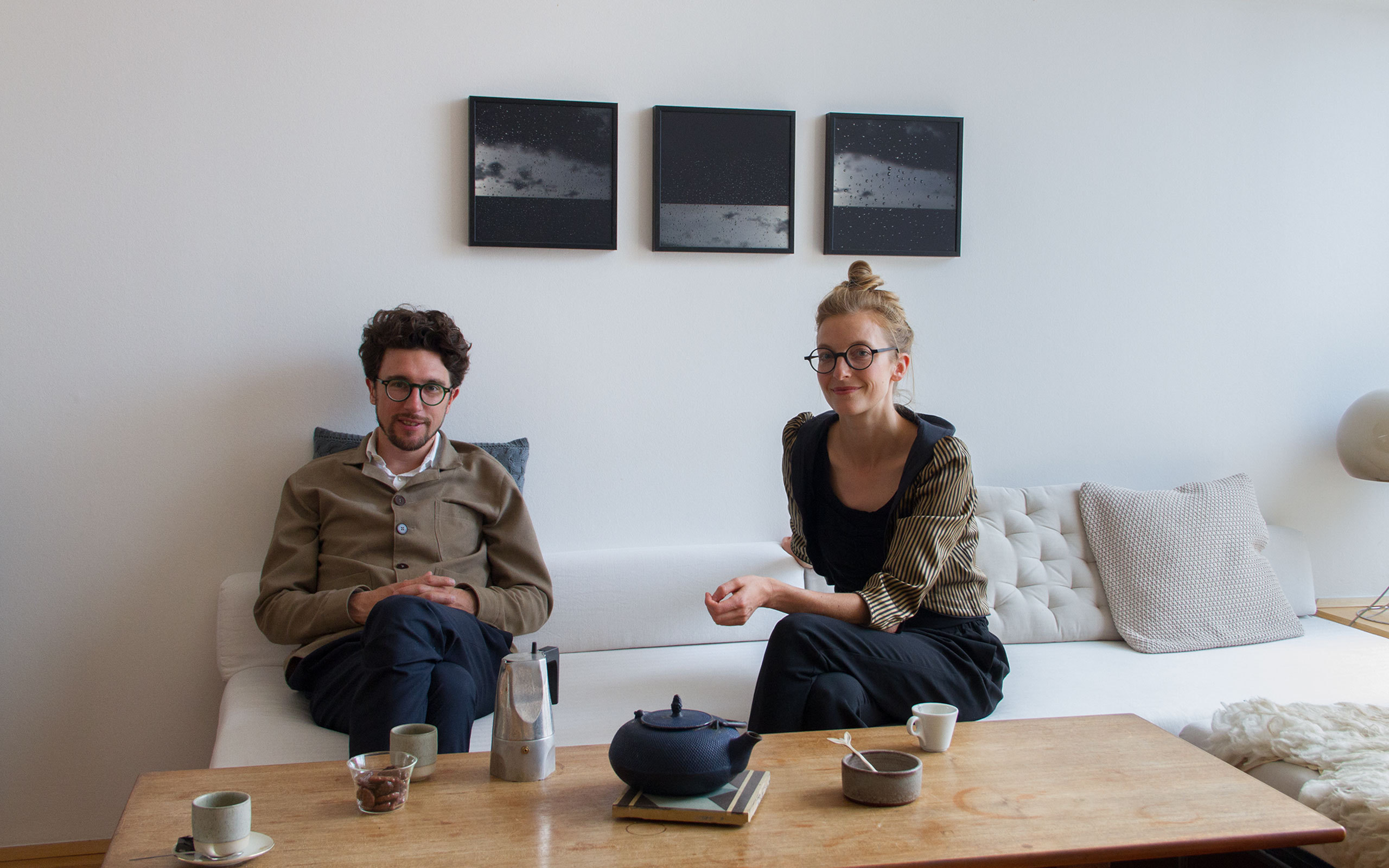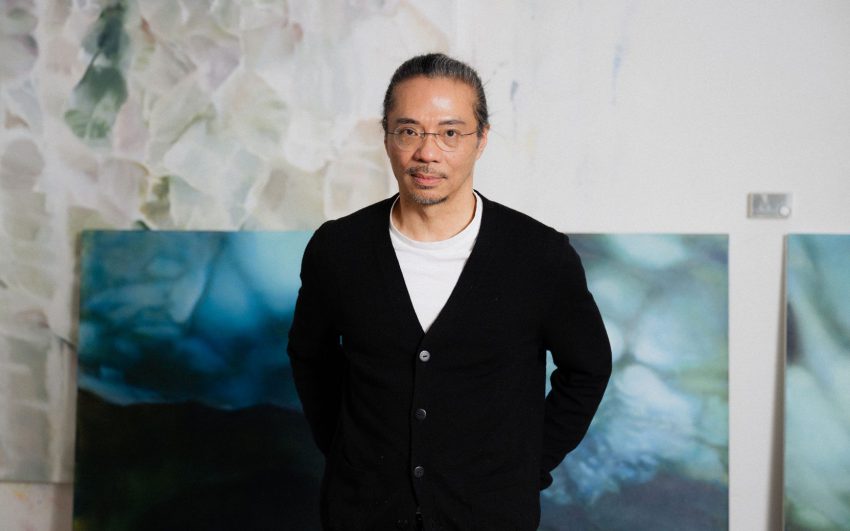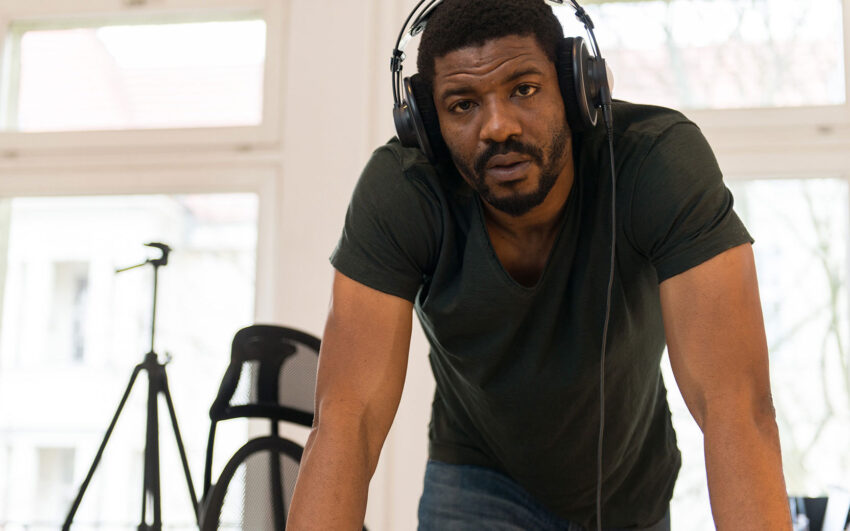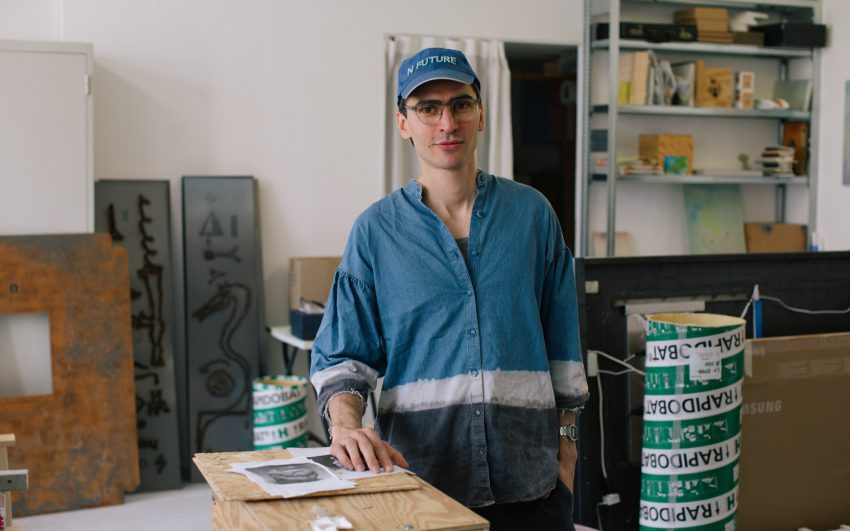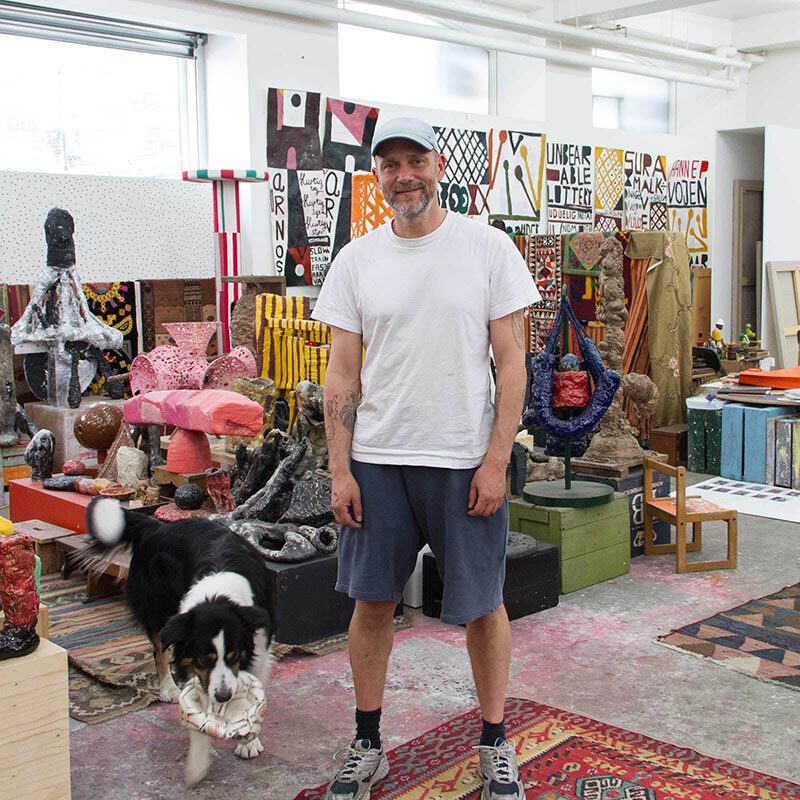The studio of Miriam Strobach and Gregor Einetter is located in the attic of a magnificent house in Vienna’s inner city, the former apartment of the designer Helmut Lang. These two creatives are the founders of the agency “Le Foodink”, which combines design with culinary matters, as well as observing and commenting on the bustling Viennese art scene. We spoke with them over a glass of Kalê, one of their own creations, among other things, about savoring new impulses in Vienna’s creative and artistic scene and about living with art.
Miriam and Gregor, you are both very active in Vienna’s creative scene. As with many new Viennese you actually come from the countryside. Can you describe this path?
M: I remember that even as a child, I felt the desire to try things out for myself. As a child I painted tons of pictures. Later my interest developed more towards design. That’s why I studied graphic design at the Joanneum in Graz. I have always been able to get excited about making things more beautiful.
G: I was aware that I wanted to work creatively, but I had no access to it in the country. At home I had very little encouragement in this direction. When I went to Graz to study, I worked at an association for the promotion of pop culture that in particular organized music events. That was my first step into the creative realm. It needed the city!
The city gave you the opportunity to develop your creativity.
G: Exactly, quite apart from the cultural offerings, the city is important to me as a place where one can interact with other people and ideas can develop quickly. That was the real reason for me to leave the country for the city as quickly as possible.
There are many great cities in the world. Did Vienna hold a particular attraction for you?
G: Initially not really, but in the meantime we have grown to love the city and there are exciting things happening here.
M: Before we came to Vienna, we’ve both lived in Paris. Through Paris we entered the culinary field. But Vienna brought us to art.
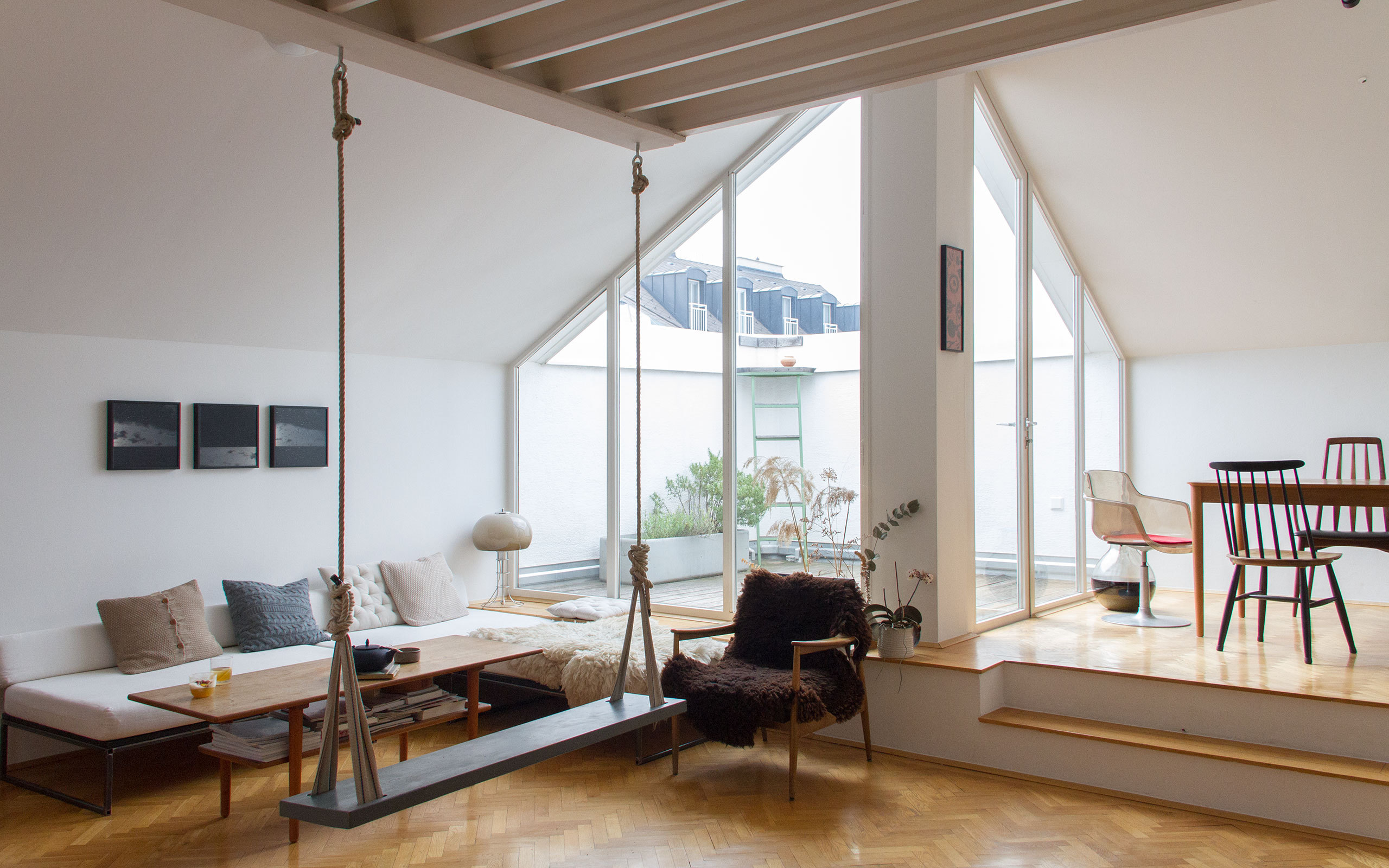
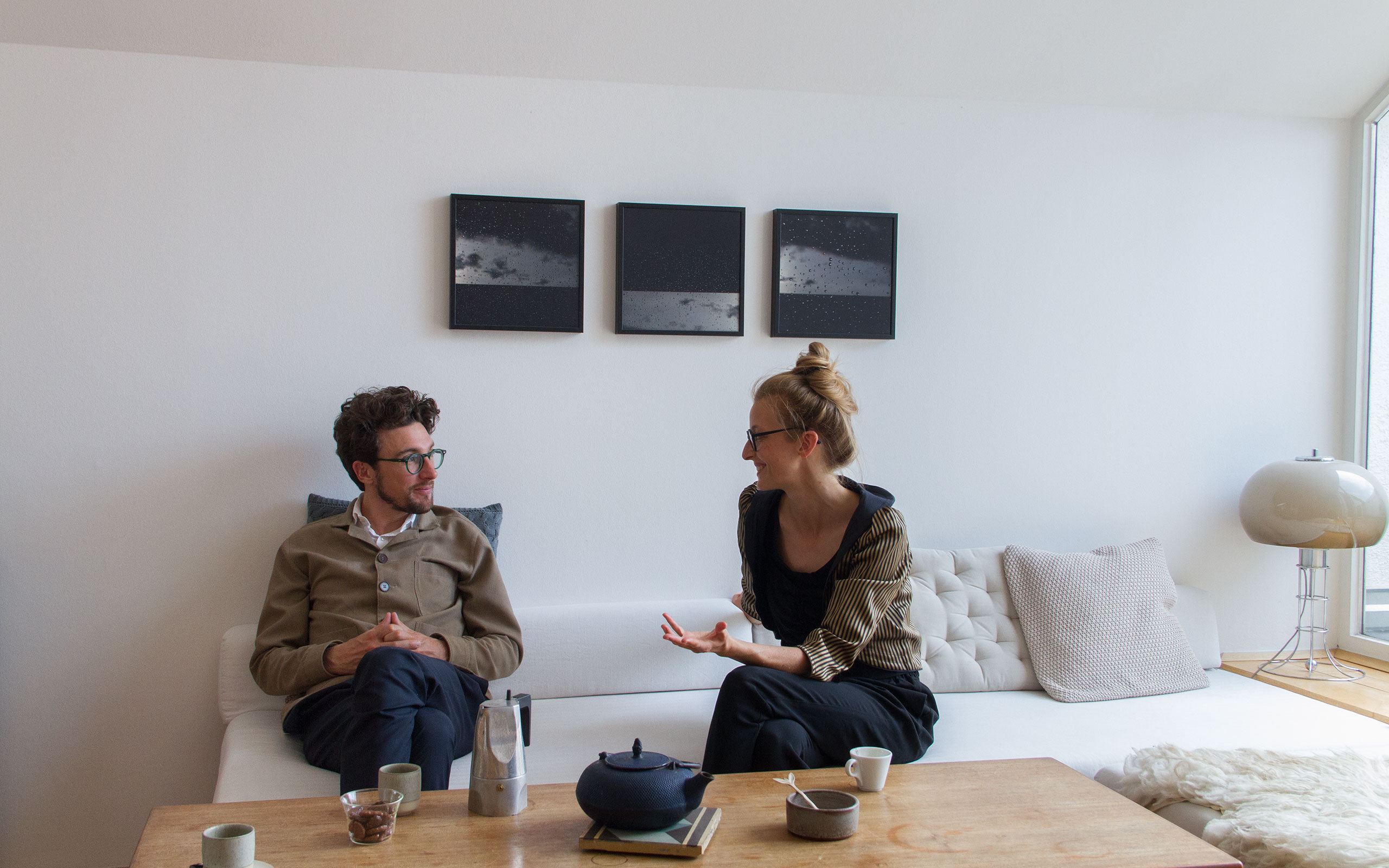
Let us then stay a little with Paris and culinary matters. How did that happen?
M: The culinary scene in Paris was a genuine inspiration to both of us. We’ve always known that we understood each other well also professionally, and we had wanted to realize a joint project for quite some time. Through sharing the experience in Paris, we both realized that food as a subject is one that would not soon get boring for us.
G: Building on that, we established a mail order business for regional bio-meat rarities under the name “Porcella” in Vienna, which we still operate.
Another culinary topic you are dedicated to is to write and design cookbooks. In the meantime you have cooperated on more than thirty cookbooks under your label Le Foodink.
M: I actually have always wanted to make cookbooks. The first book I realized was digital. In the meantime I have worked my way to printing books. I still love to do that, because each book has its own world and one can live out one’s whole creativity.
G: Besides books, we sometimes participate with our services in other culinary events. In the beginning, such projects were even more important to us, since then, our own activities have grown so much that we do it rather rarely now. But when someone asks us and the product and the approach fits, we participate.
Meanwhile you have lived and worked in Vienna for ten years. How did you make your way into the creative and art scene here?
M: Our friendships and acquaintances here have developed in such a way that for the most part we deal with people from the creative and art sector. This exchange is an important inspiration for us. One constantly stimulates each other with ideas.
G: Good ideas have always been fascinating. I personally think that the most interesting ideas come from artists. Because we are working creatively ourselves and are always in search of new ideas, or often simply admire what other people do, the idea of networks and using the city as a playground are very exciting to me.
M: The net of relationships with all the people whom we meet daily has brought us closer to art.
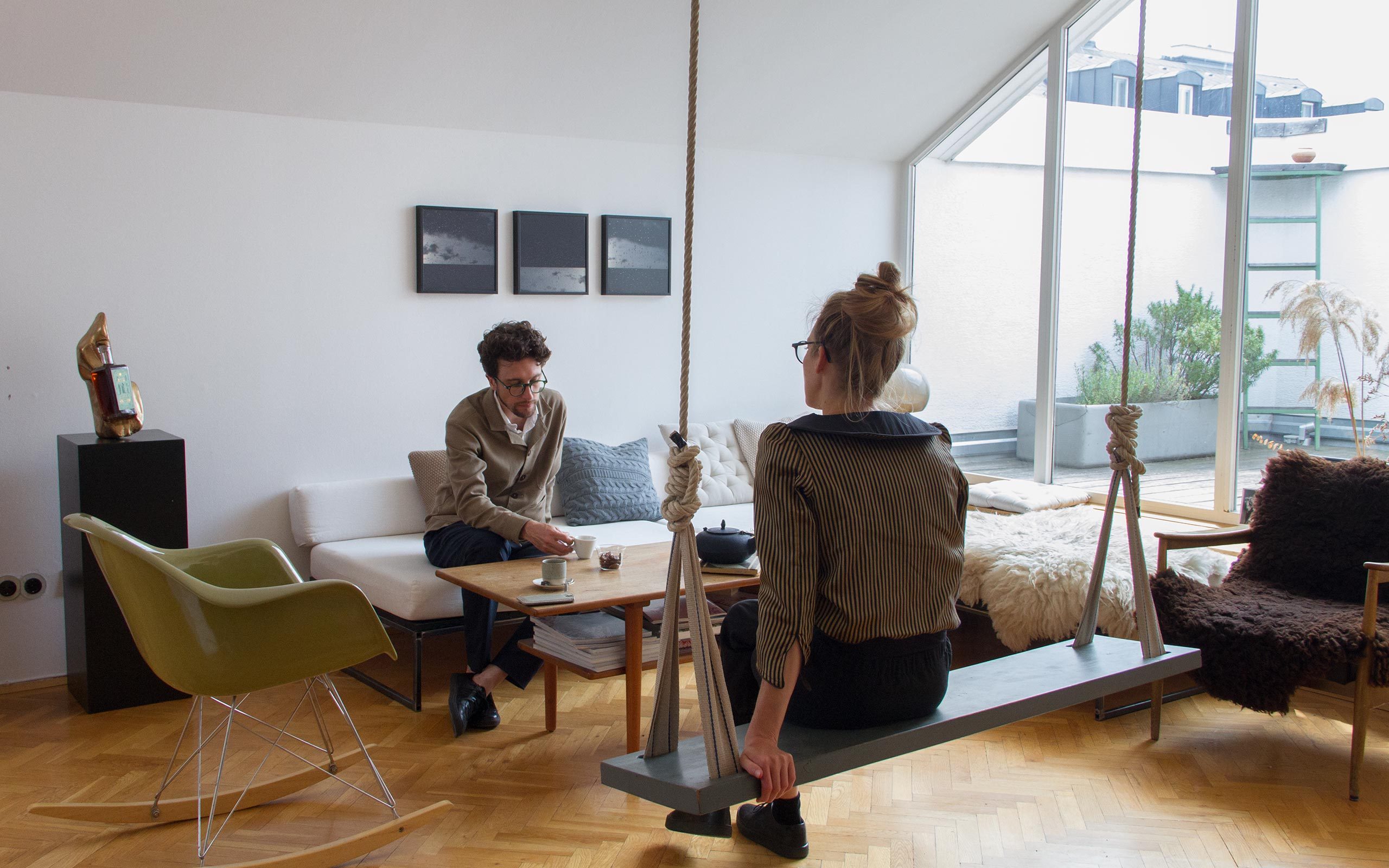
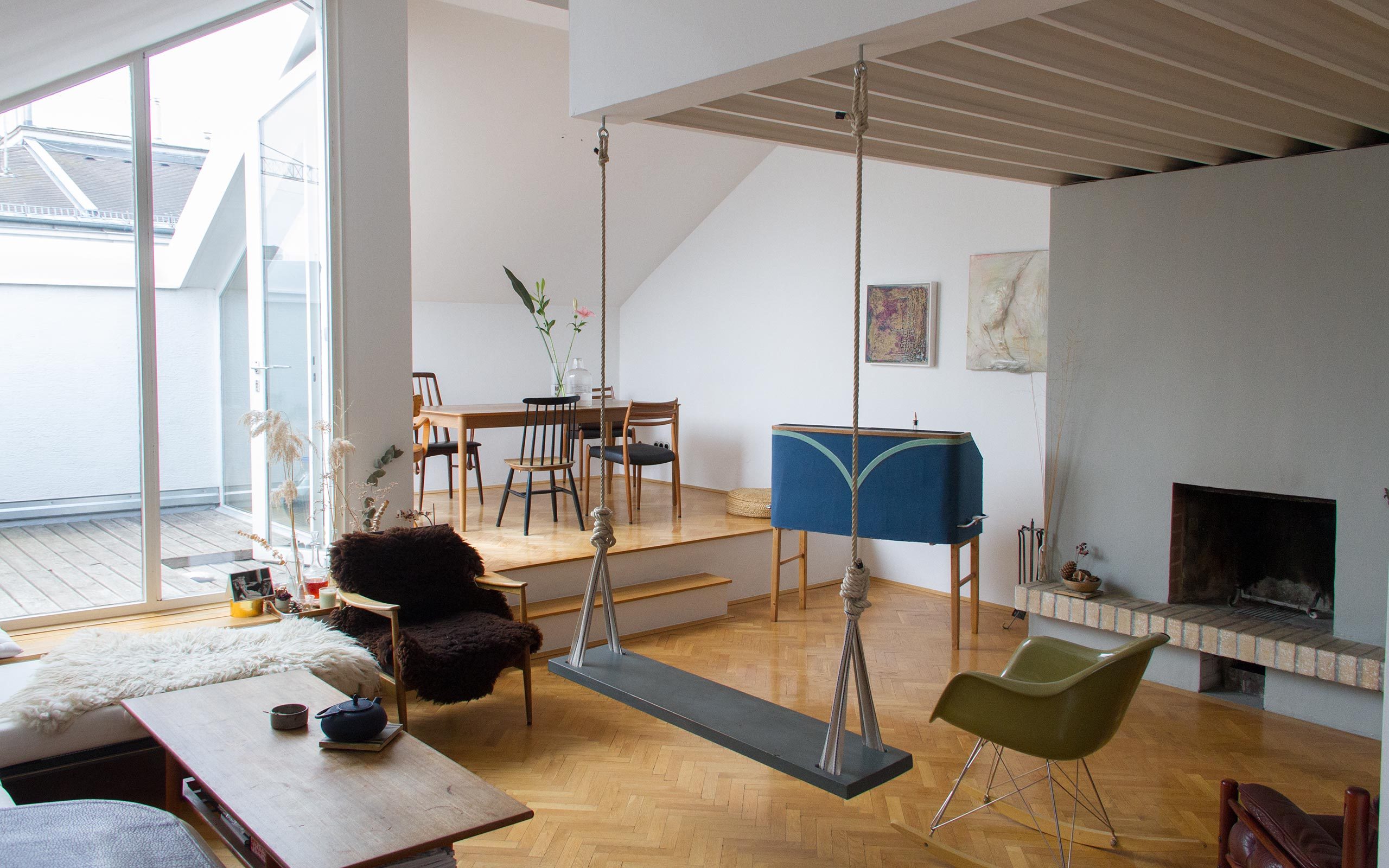
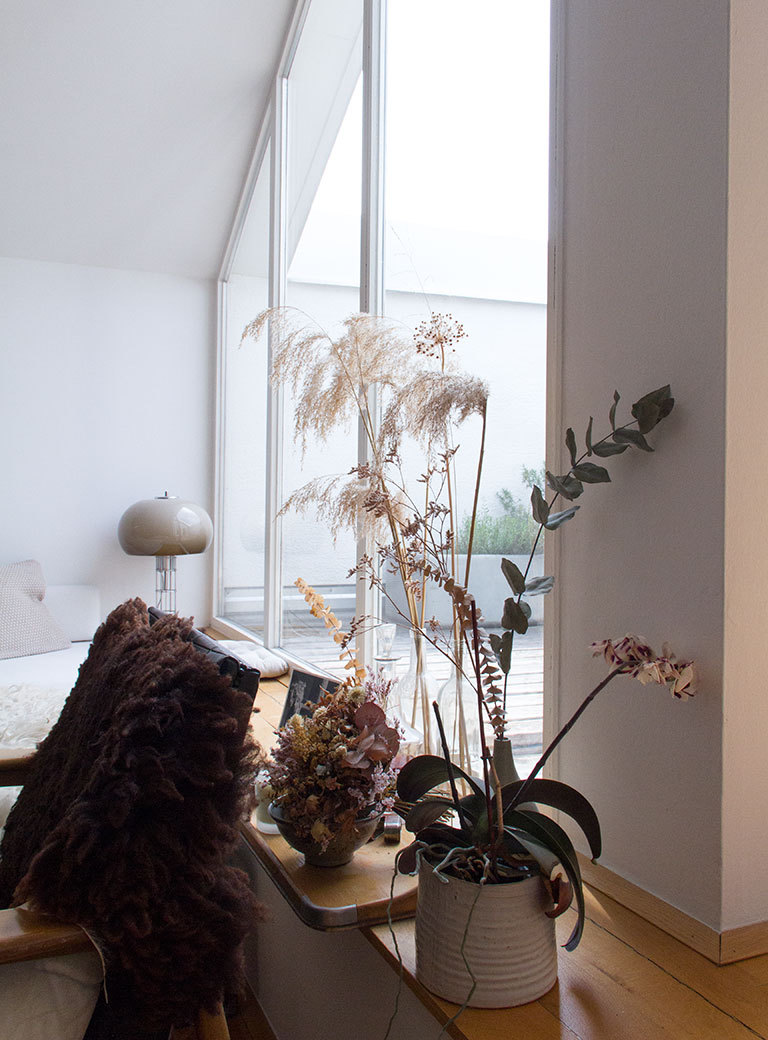
Vienna is a city for refined tastes and is a cultural metropolis. But is Vienna also a hotspot for contemporary art?
G: In fact, in Vienna there is no way to avoid art anymore than there is to avoid food! (laughs)
M: It appears to me as if especially in the last years the Vienna art scene has renewed itself and that something is “cooking”. Generally I have the impression that the city, contrary to how it was some years ago, has become more open, more courageous, and perhaps also more radical. These developments are always seen more immediately in the art scene.
G: One notes that some very exciting galleries for contemporary art have recently opened, and many off-spaces have also emerged. It is clear that a certain dynamic has entered the scene. The enthusiasm one encounters in Vienna is infectious and it also appears as though young art is now appealing to a broader public.
Can you name some galleries that especially show work by young artists?
G: We think Gianni Manhattan, Zeller van Almsick, Sophie Tappeiner, and Vin Vin are really quite awesome.
From your own activities it seems that your herb liqueur Kalê is closely connected with art. Can you say how one manages to create one’s own liqueur?
G: Kalê actually came about through impatience with being idle, and the urge surfaced to experiment with something new. I personally love herbal bitters and liqueurs and I thought that one should try something new in this field – something that wouldn’t necessarily be produced from alpine herbs.
M: In the beginning it was rather like gambling. We experimented with huge glass bottles, and at some point realized that herbs have certain effects, in fact in earlier times herbal bitters were often used as remedies. We then worked together with a pharmacist and a cook, and after one and a half years we had refined our recipe.
G: There are certain drinks that one connects closely with a specific city or with a specific time. We wanted to create something like this for Vienna.
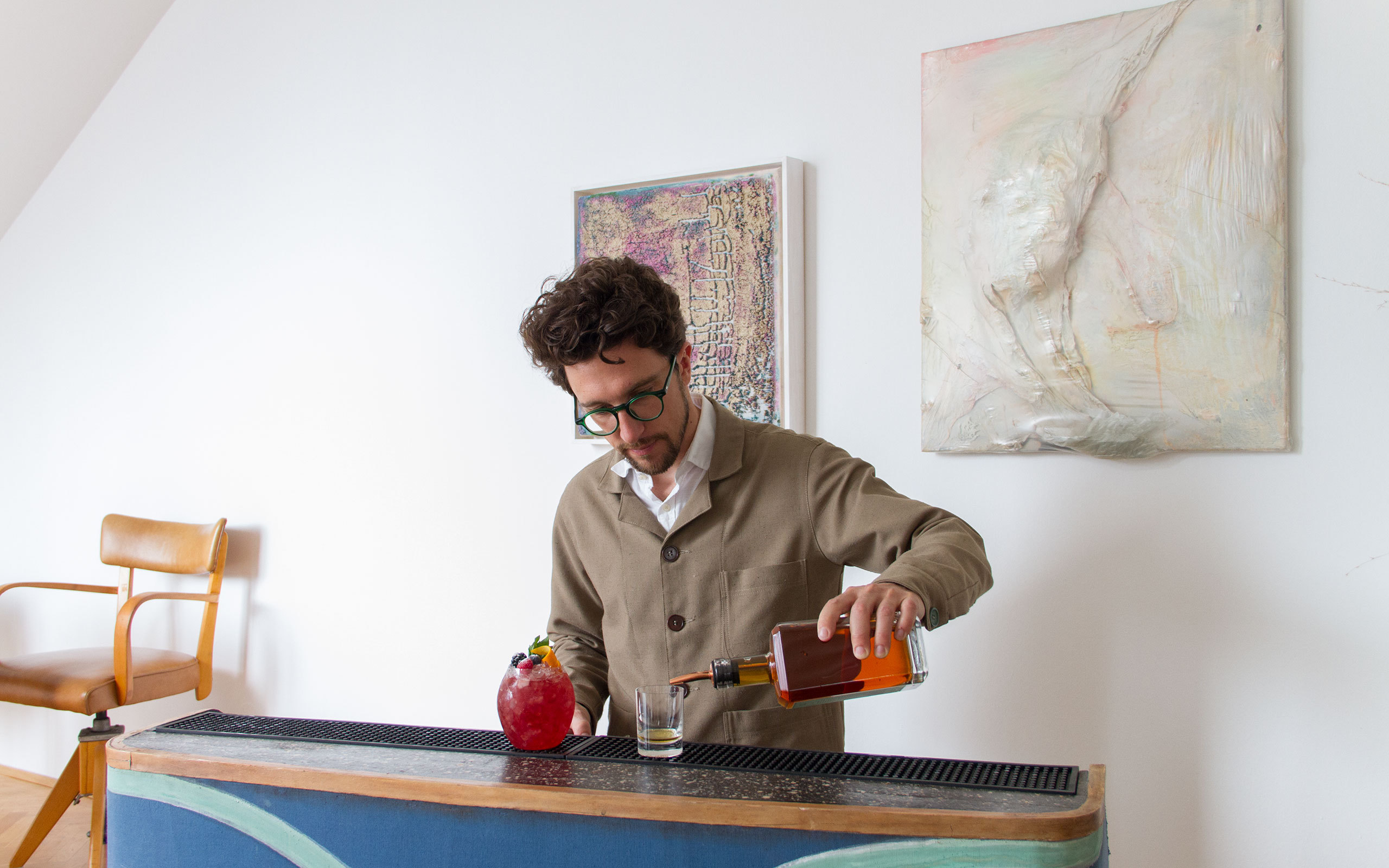
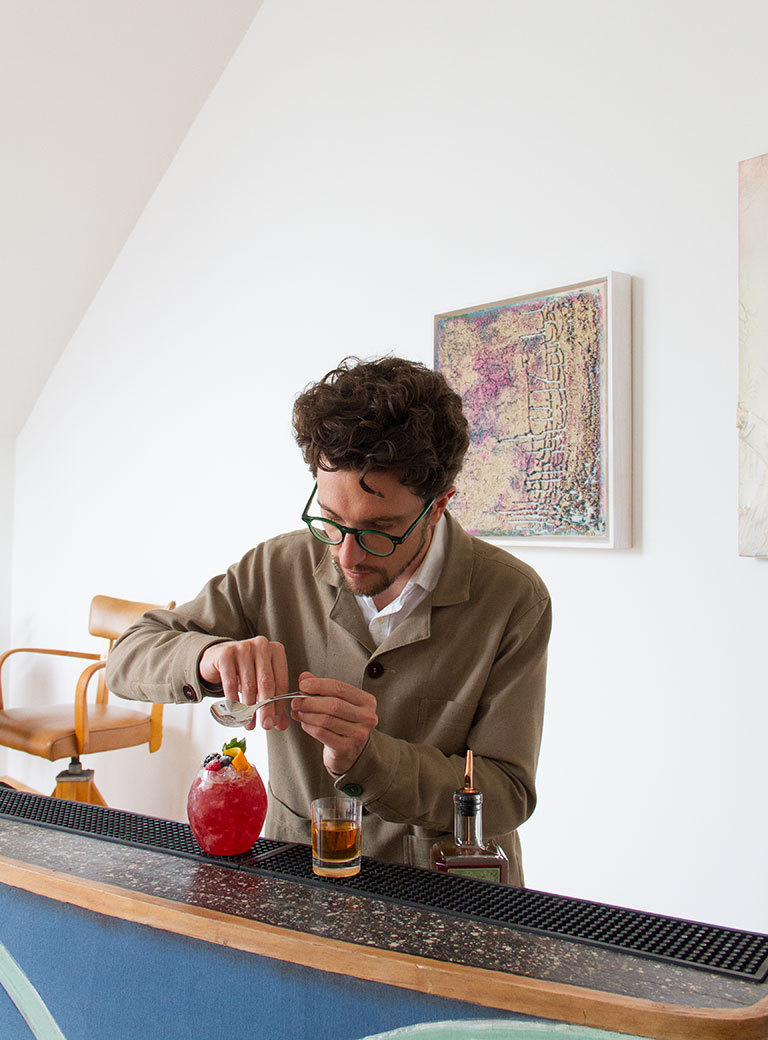
When one wants to make a product that is especially iconic for a city, design plays an important role, doesn’t it?
M: Yes, in our case the development was a long story. We worked together with a young artist, and Gregor created a story to go along with the drawings. I brought the entire thing into form. Our considerations began with the colors we would use. The reseda green we borrowed from the roofs of Vienna and it is also reminiscent of the Otto Wagner green for which Vienna is so well known.
What feeling is the combination of taste and design in Kalê meant to communicate?
G: That is already expressed in the name: Kalê is the name of one of the three graces and stands for grace, that is beauty with which one is not born but acquires over the course of one’s life. I find it is fitting for a liqueur that is thought of not only as a stimulant but as an elegant drink to enjoy in pleasant moments.
Looking around your studio, it all appears very harmonious. One gets the impression that you agree in aesthetic matters.
M: That is probably due to the fact that we are connected by a long shared history, we’ve experienced places together, discussed things, and developed our tastes together. We both consider it important to feel comfortable with the things with which we surround ourselves, and that these things should be meaningful and inspiring to us.
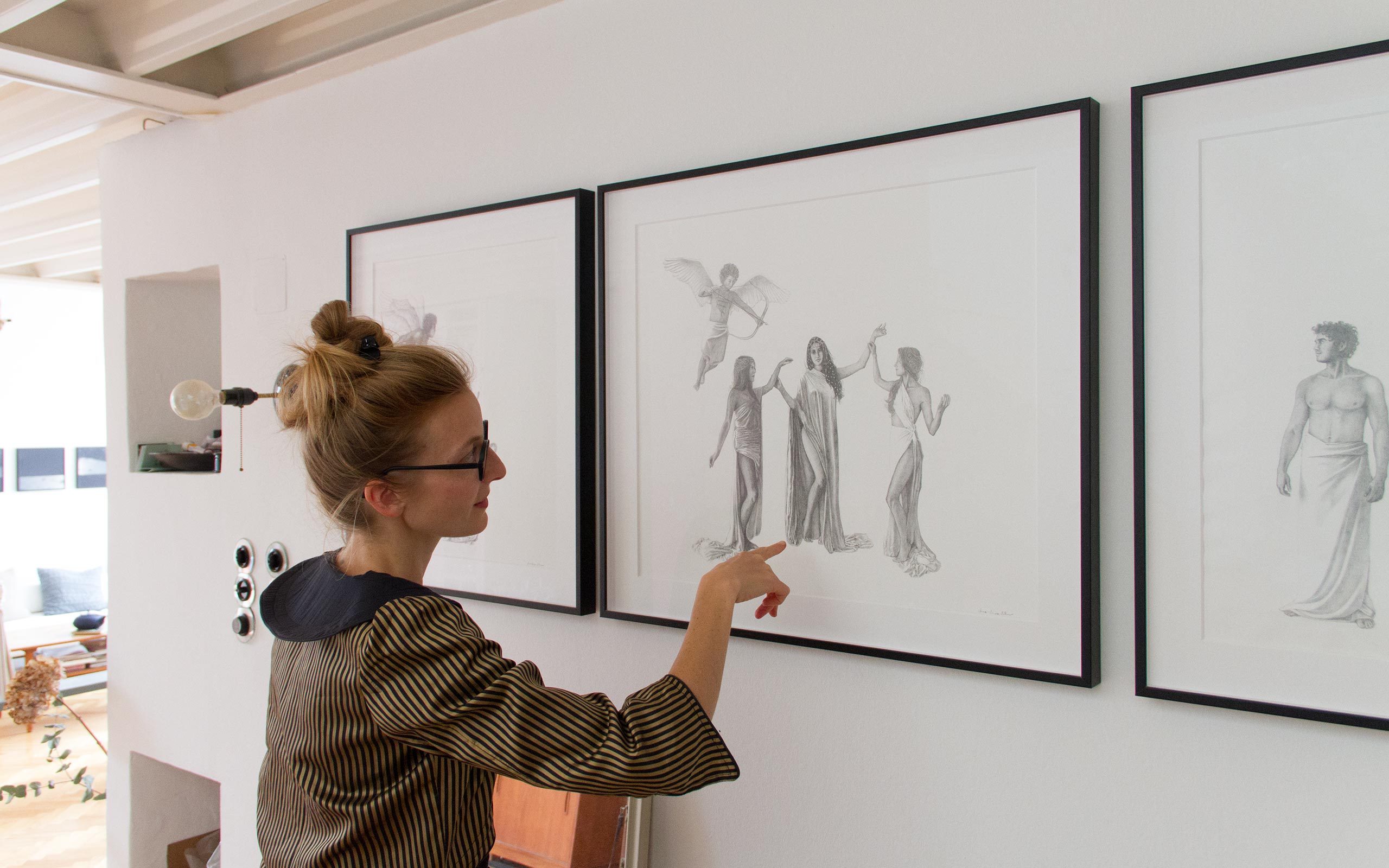
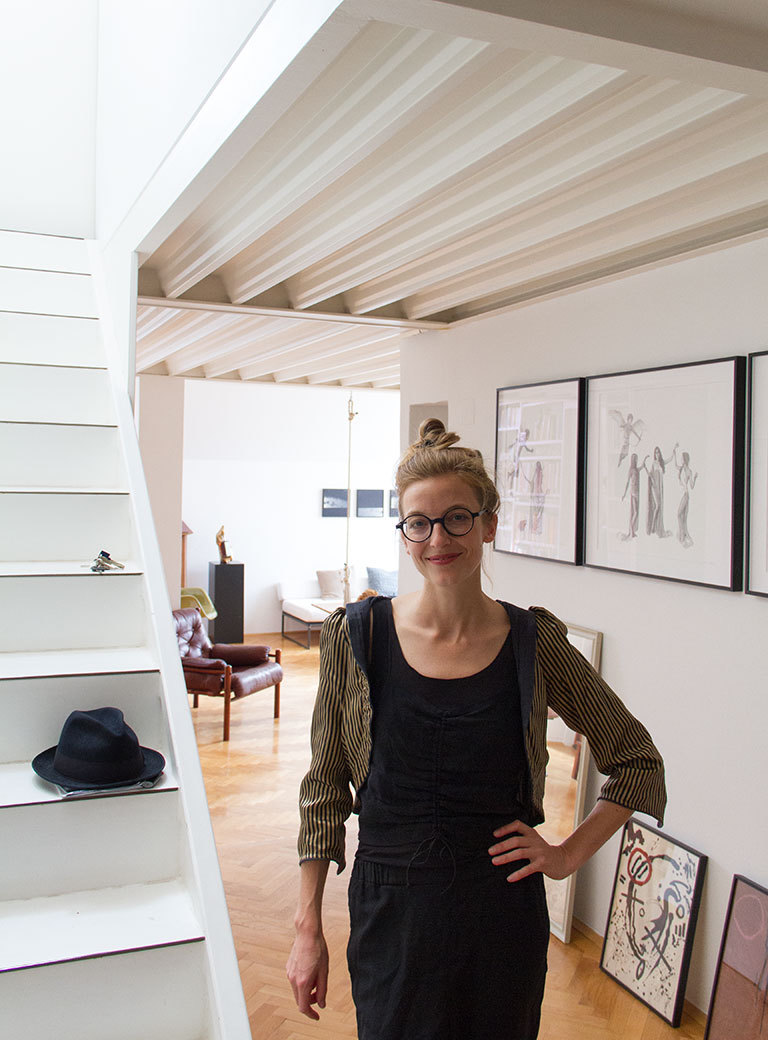
Let’s also talk about art! How did you acquire your first work of art?
M: At one point Gregor brought home the first artwork purchased, put it on the table and said, “Look, I have something!” I didn’t know exactly what it was. The parcel on the table appeared as if still wrapped, not a typical picture to be hung on a wall. At first I couldn’t relate to it nor did I know what Gregor liked about it. I now love the picture and it has received a prominent place in our house.
G: I love the picture and love to look at it as it also has a personal story. The artist, Oliver Haidutschek, is an old friend of mine and the work creates a connection with him.
Has it since then remained that one of you makes the decision for a new piece of art?
G: It’s always different, there’s no structured process! It ranges from stumbling upon something that jumps up at you to the work of friends that we have long admired and wish to be close to. And there is art that interests us because the theme has connection to Kalê, as for example the life and love elixirs of Marina Sula.
M: Or the drawing of the three graces here, which also has a connection with Kalê. This picture enchants me beyond measure.
What one sees on your walls appears refined and very carefully selected. There is nothing to indicate that you are hoarding art like many collectors do.
G: Well, we do think that white walls have to be filled with something! (laughs)
M: But, we are definitely not collectors of the sort who simply hoard art and don’t necessarily display it. Every work of art we own means something to us and has its place.
How would you describe your living together with art?
M: It is simply beautiful to be surrounded by artworks, at some point they become rather like friends.
G: Yes, ideally I would like art to be present in all areas of my life. Art conveys ideas and invites discussion. Artists explore the state of humanness and at the same time have the ability to communicate it in a way that transcends time. I greatly admire this ability to express something purely with one’s own skills.
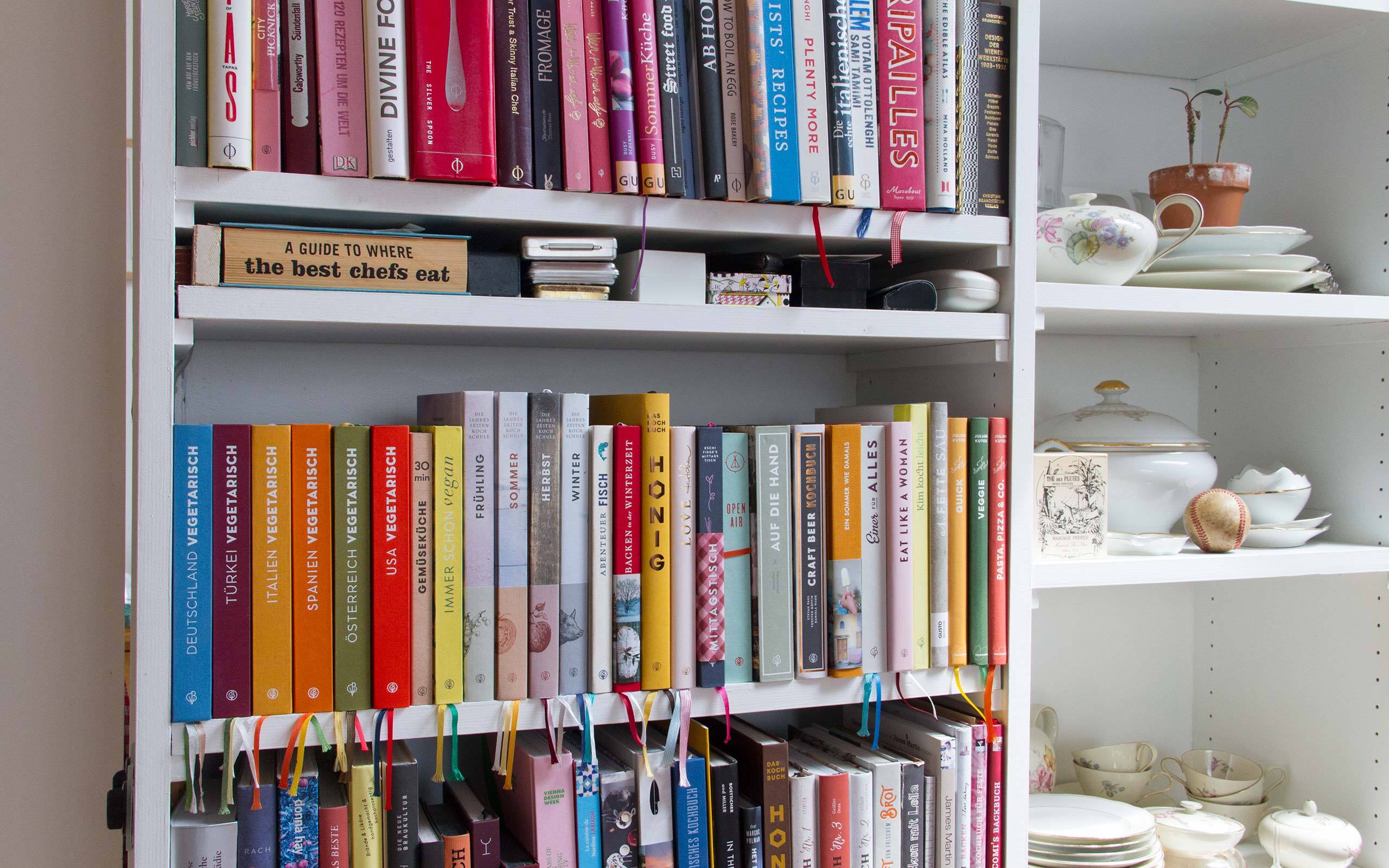
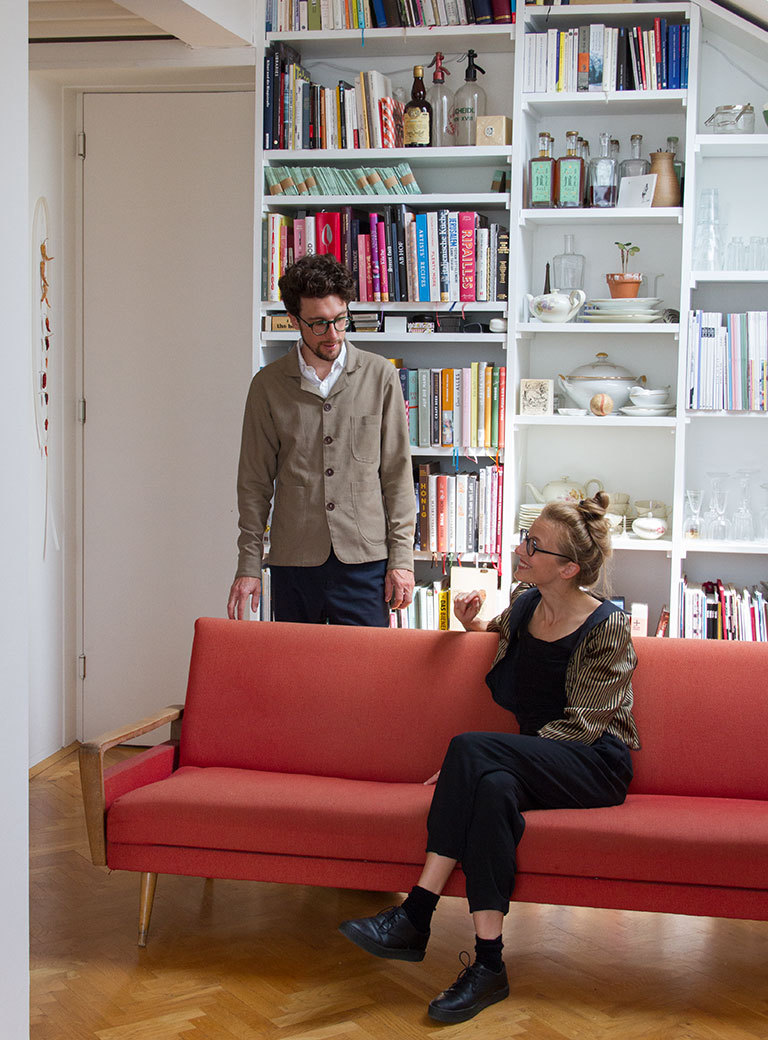
Even though you hold the same opinion on many things, your approach to art seems to be individualistic.
M: That is true. Gregor certainly relates more to content and personal aspects, while I am attracted by the visual. In that respect we are very different, but when both come together, it is a good basis for decision making.
Back to Kalê. It is indeed a special brand in that it is closely related to the Viennese art scene and therefore connects you intensively with that scene.
G: Through our personal interest in art we decided right from the beginning with Kalê to direct a portion of the profit into artistic activities by both buying art and the support of events. Sometimes we simply donate Kalê as a drink, and sometimes we enter into a closer cooperation wherein Kalê becomes integral to the concept.
M: For example, we cooperated with Benjamin Kaufmann and Marino Formenti on the occasion of a concert at which we served Kalê almost like a formal tea ceremony and the drink became a part of the entire experience. With baden by Anna Paul, people could enjoy Kalê served in the way that one would serve sake. We have worked with Julian Turner a number of times, he built a bar for us and made an installation in our storage facility.
G: There is always an interesting exchange that inspires new ideas in us.
Have you any personal advice for people who are interested in collecting art or who simply want to bring art into their lives?
M: Everyone has a different background and therefore a different point of view. Consequently following one’s own viewpoint on things will lead to the best results.
G: I find it is important to simply go where things are happening. In Vienna, there is an enormous range of possibilities in which to explore art, from the Kunsthistorisches Museum to the off-spaces. Everyone can find something of interest to them, and in many cases it is free of charge! Already by going out into the scene brings art and the interaction with it into one’s life. And, I can admire a piece of art without feeling the need to buy it immediately.
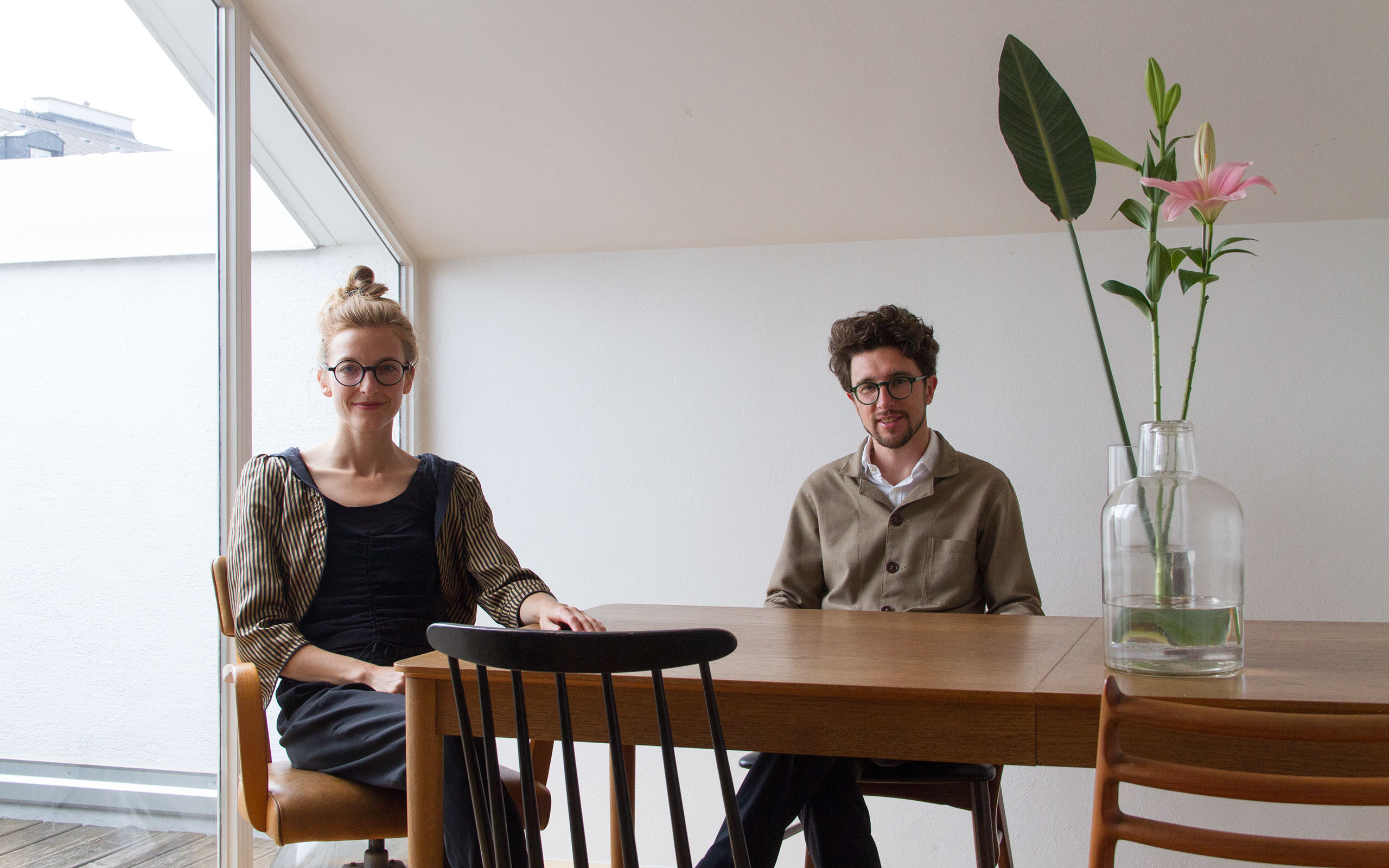
Interview: Gabriel Roland
Photos: Florian Langhammer
Links:


